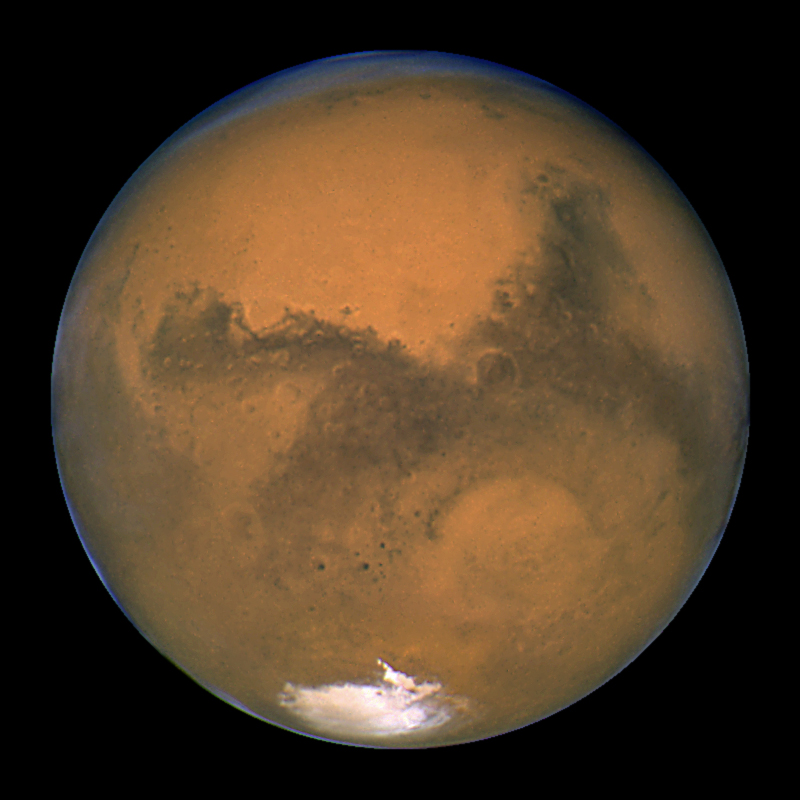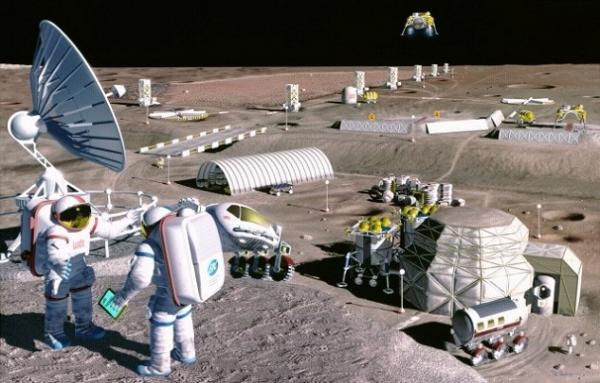
NASA's overarching goal of sending astronauts to Mars may not be worth the time, money and trouble, a prominent researcher says.
NASA's human spaceflight efforts have long been geared toward eventually putting boots on the Red Planet. But the agency should think seriously about ditching this plan, for the benefits of a manned Mars mission may not justify its enormous costs, said space architect Brent Sherwood of NASA's Jet Propulsion Laboratory in Pasadena, Calif.
"Our rationale for exploring Mars, I think, is perhaps fatally weak," Sherwood said during a presentation with NASA's Future In-Space Operations working group Wednesday (Aug. 1).
"I would suggest that maybe instead of whining about not getting enough money, we ought to quit that and redesign our human spaceflight product for success," he added. [Giant Leaps: Top Milestones of Human Spaceflight]
Red Planet dreams
The urge to explore is part of human nature, and Mars has been an inviting target for the better part of a century.
Indeed, researchers began thinking up ways to get our species to the Red Planet before the Space Age even dawned. The famed rocket scientist Wernher von Braun published his seminal book "The Mars Project" in 1948, for example, nine years before humanity launched its first satellite to Earth orbit.
Get the Space.com Newsletter
Breaking space news, the latest updates on rocket launches, skywatching events and more!
So it's perhaps no surprise that NASA is seeking to get astronauts to Mars. But the space agency isn't legally required to work toward this goal, Sherwood said, citing the NASA Authorization Act of 2010.
According to the Act, "The long-term goal of the human spaceflight and exploration efforts of NASA shall be to expand permanent human presence beyond low-Earth orbit and to do so, where practical, in a manner involving international partners."
The Act doesn't stipulate that sending people to Mars must be part of this process, so NASA has some flexibility. Sherwood thinks the agency should re-examine its human spaceflight program, because pushing for the Red Planet in the next three decades or so may not constitute the best use of NASA's limited resources. [Future Visions of Human Spaceflight]

$100 billion for six astronauts?
A manned Mars mission would be incredibly expensive. NASA estimates peg the overall expenditures at about $100 billion over 30 or 40 years, Sherwood said, but those numbers may be too low.
The International Space Station (ISS), after all, was initially anticipated to cost $10 billion over 10 years. But it ended up costing 10 times that, and took nearly three decades to assemble.
NASA officials have said the agency will work with international partners on any potential manned Mars mission, so the agency wouldn't have to fork out the entire $100 billion (or however much such an effort ends up costing). But the returns to the agency and the nation could still up being comparatively meager, Sherwood said.
"After all of that investment, and all this commitment sustained over these decades, you get six civil servants on another planet, and probably only two of them are U.S. civil servants, because it's got to be an international project," Sherwood said.
"So maybe that's worth it; I don't know," he added. "I think it may be judged in the grand arc of modern history to be seen as not worth it, and I think that's the risk. But that's the conversation to have."
While reaching Mars would be a triumphant moment for our species, there's unlikely to be much scientific rationale for putting humans on the Red Planet three decades from now, Sherwood said. NASA's robotic explorers have become more and more capable and durable over the last 15 years or so, and there's no reason to think such improvements won't continue.
"The humans are not going to be doing anything close to the kind of science that we're already doing robotically or that we can do on ISS in low-Earth orbit right now," Sherwood said.
And robotic missions — like NASA's Mars Science Laboratory, which is due to drop the car-size Curiosity rover on the Red Planet Sunday night — are cheap by comparison. MSL, the biggest and most ambitious rover ever launched, costs $2.5 billion.

Human spaceflight alternatives
If NASA did decide to turn its human spaceflight efforts away from Mars, where could it direct them? Sherwood gave three alternatives, all of which he said are worth a look.
One is colonizing the moon, which would extend humanity's footprint beyond Earth and teach us how to utilize space-based resources. Sherwood said a focus on lunar settlement could conceivably result in 100 or so people living on Earth's nearest neighbor by 2050.
Another option is to help accelerate the pace of passenger space travel, an effort that NASA is already encouraging via its Commercial Crew Development program. Going more fully down this path could help extend spaceflight to the masses, with potentially thousands of people visiting orbiting hotels and resorts by mid-century, Sherwood said.
Finally, NASA could focus on making space-based solar power — a long-held dream of futurists and science-fiction writers — a reality. Building power-beaming stations in space could help secure a clean-energy future for the planet and give our species a foothold in Earth orbit, with perhaps 100 skilled workers living offworld by 2050, Sherwood said.
These three options could all stimulate economic expansion here on Earth and bring more private money into spaceflight, something a manned Mars mission would be unlikely to accomplish, Sherwood said.
Sherwood stressed that he's not against sending astronauts to Mars. He just thinks NASA needs to take a long look at whether or not that should be the ultimate goal of its human spaceflight efforts.
"I love human exploration, and I love the idea of humans to Mars," he said. "But I think there's a problem that we have. And the purpose of this conversation is to try to expose that problem in the terms I've been thinking about it, share that with you and stimulate discussion."
NASA Television will broadcast live coverage of Curiosity's landing on Aug. 5 beginning at 8 p.m. EDT (11 p.m. EDT; 0300 GMT Aug. 6). You can watch the webcast on SPACE.com here.
Visit SPACE.com for complete coverage of NASA's Mars rover landing Sunday. Follow SPACE.com senior writer Mike Wall on Twitter @michaeldwall or SPACE.com @Spacedotcom. We're also on Facebook and Google+.
Join our Space Forums to keep talking space on the latest missions, night sky and more! And if you have a news tip, correction or comment, let us know at: community@space.com.

Michael Wall is a Senior Space Writer with Space.com and joined the team in 2010. He primarily covers exoplanets, spaceflight and military space, but has been known to dabble in the space art beat. His book about the search for alien life, "Out There," was published on Nov. 13, 2018. Before becoming a science writer, Michael worked as a herpetologist and wildlife biologist. He has a Ph.D. in evolutionary biology from the University of Sydney, Australia, a bachelor's degree from the University of Arizona, and a graduate certificate in science writing from the University of California, Santa Cruz. To find out what his latest project is, you can follow Michael on Twitter.









